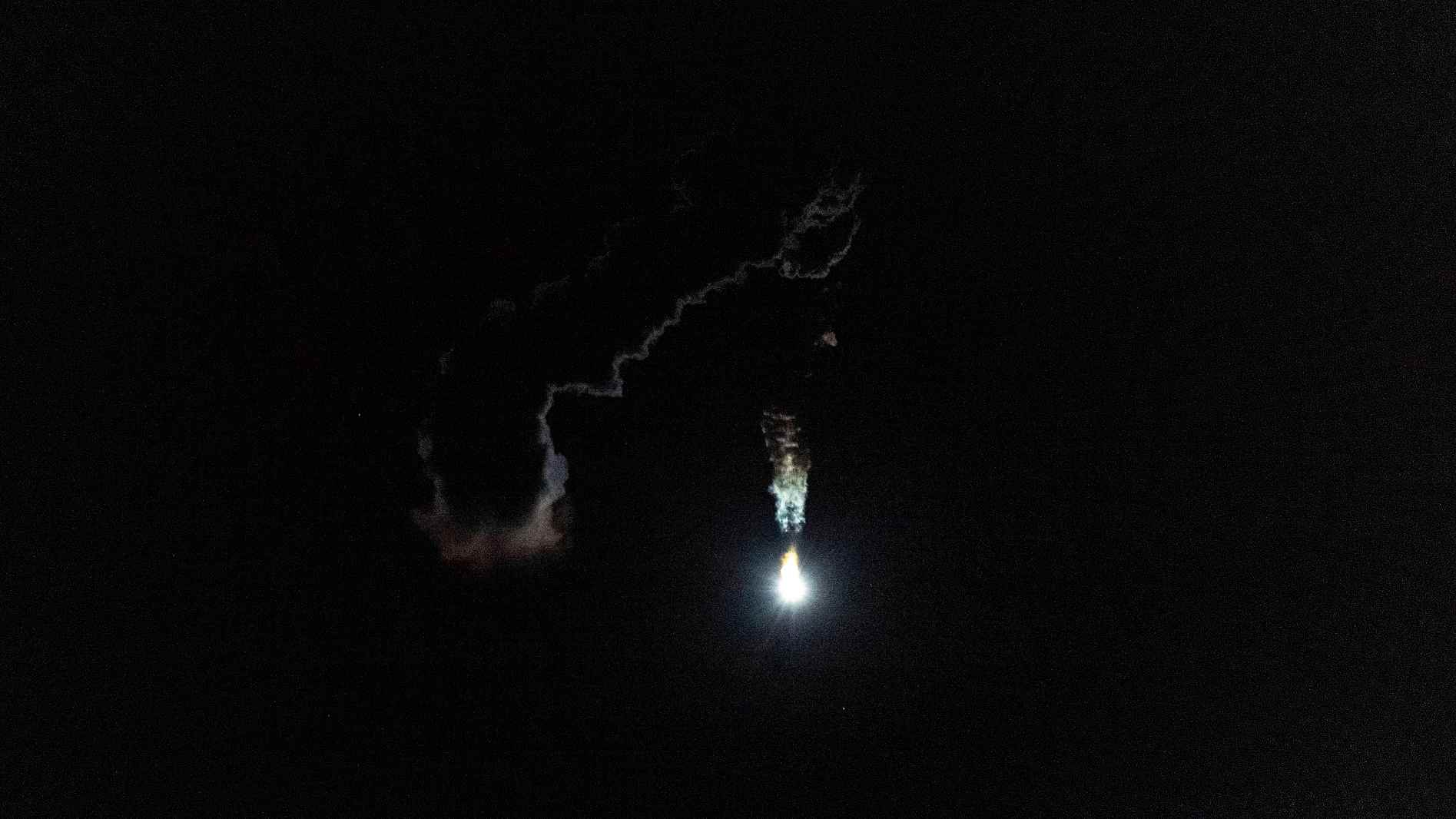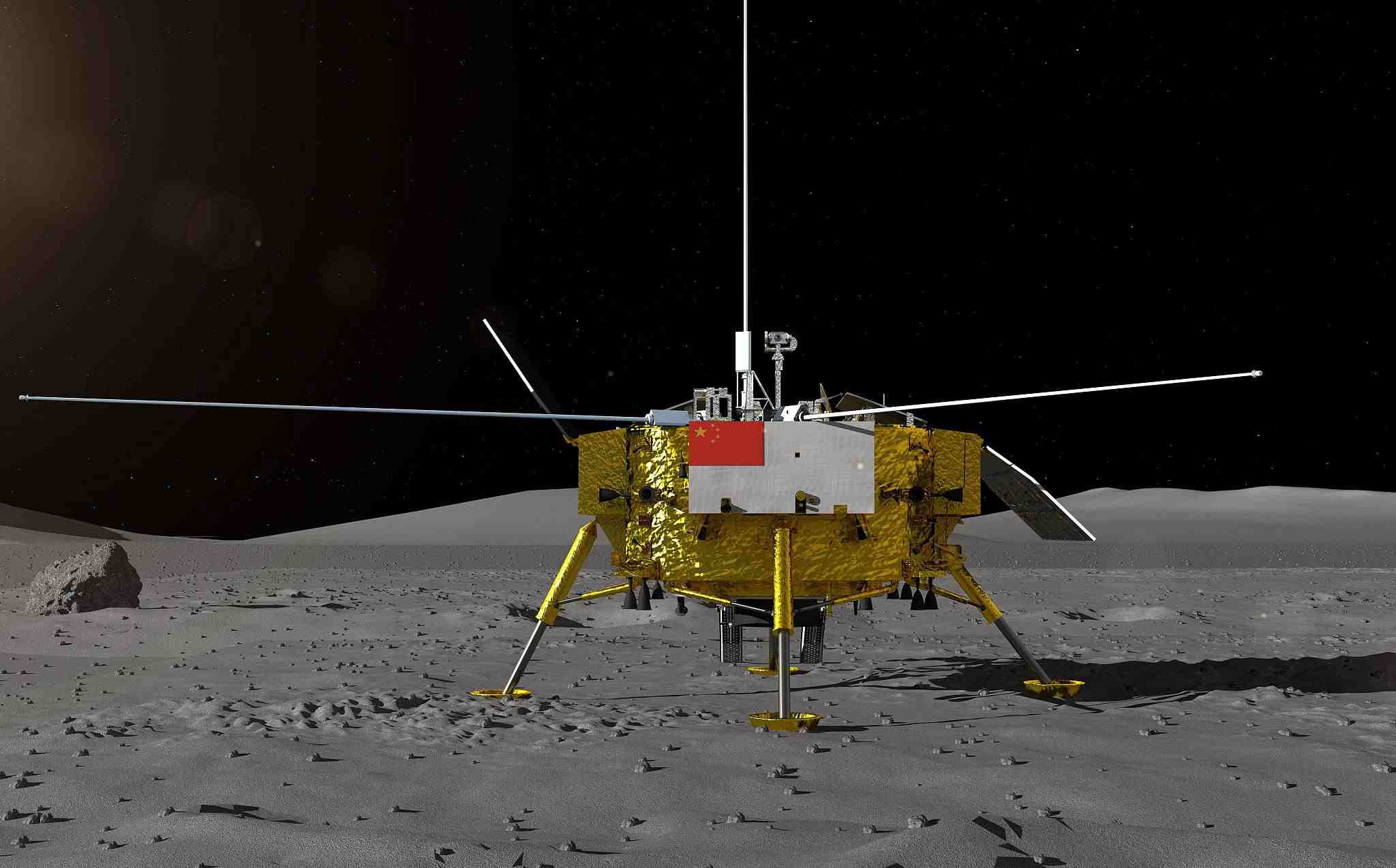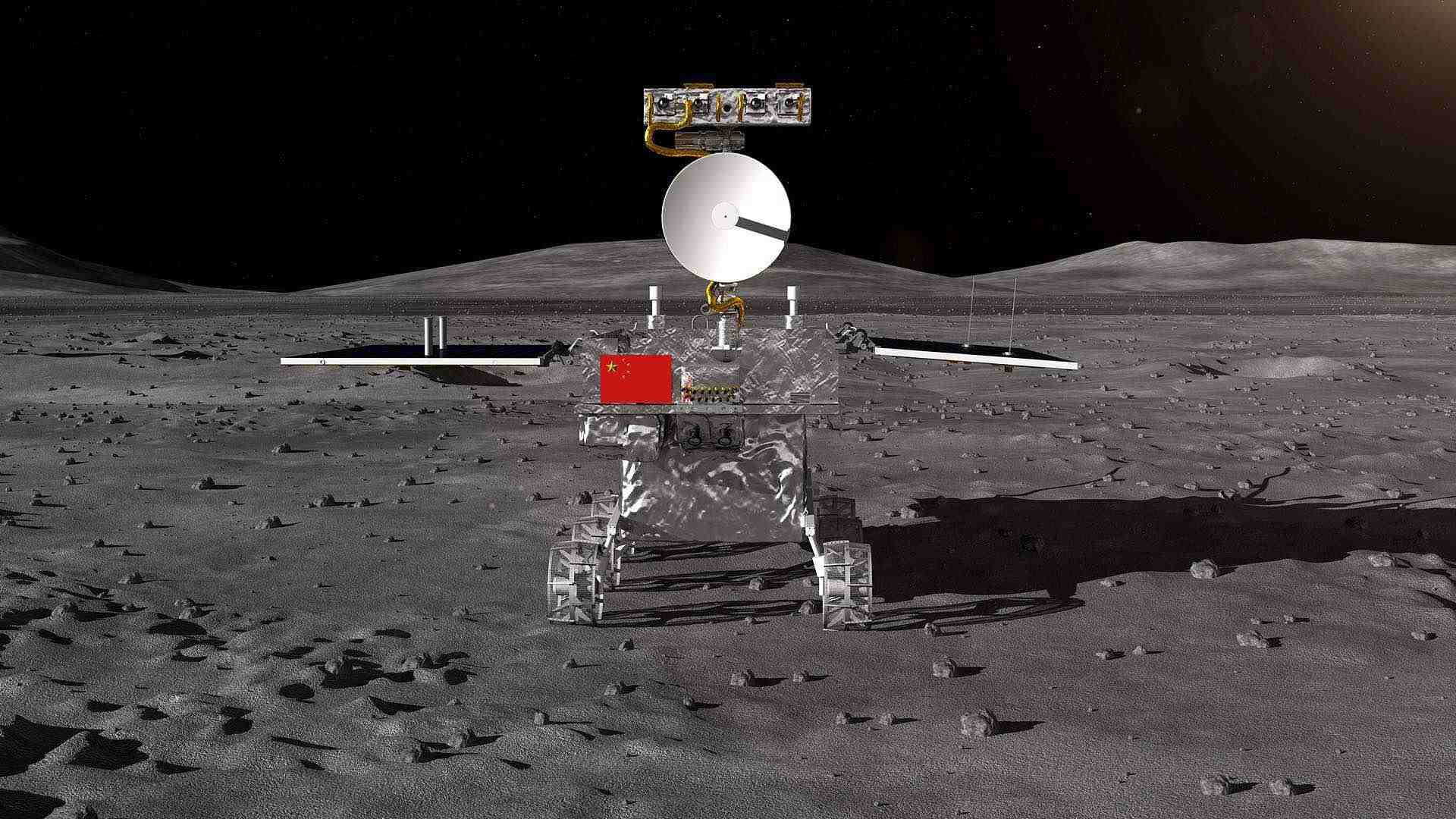
Space
20:20, 12-Dec-2018
China's Chang'e-4 lunar probe successfully brakes for lunar orbiting
Updated
19:10, 15-Dec-2018
CGTN

China's Chang'e-4 lunar probe successfully decelerated near the Moon and entered the lunar orbit, completing a vital step before making the first-ever soft landing on the far side of the Moon, space authorities announced on Wednesday.
After flying about 110 hours towards the Moon, the probe successfully conducted the "space braking" and entered an elliptical lunar orbit with the perilune at about 100 km at 4:45 p.m. Beijing time, said China National Space Administration (CNSA).
Perilune braking is a crucial orbital control during lunar probe flight. The probe decelerated near the Moon, making its velocity slower than the Moon's escape velocity before the lunar orbit insertion.
In line with instructions sent from a control center in Beijing at 4:39 p.m., an engine on the probe was ignited when it was 129 km above the surface of the moon. The engine shut down normally after five minutes.
The real-time telemetry data monitoring showed the Chang'e-4 probe has successfully entered the orbit.
The probe, including a lander and a rover, was launched by a Long March-3B carrier rocket last Saturday from the Xichang Satellite Launch Center in southwest China's Sichuan Province, opening a new chapter in lunar exploration.

The simulation of the lander on the Moon /VCG Photo
The simulation of the lander on the Moon /VCG Photo
As the rocket was able to send the probe into orbit precisely as planned, the control center only adjusted the probe's orbit once on Sunday and also canceled two pre-planned orbit trimmings before the near-moon deceleration, CNSA said.
Next, the control center will adjust the probe's orbit around the moon and test the communication link between the probe and the relay satellite "Queqiao", which is operating in the halo orbit around the second Lagrangian (L2) point of the earth-moon system.
Afterward, the control center will choose a proper time to land the probe on the far side of the moon, according to CNSA.

The simulation of the rover on the Moon /VCG Photo
The simulation of the rover on the Moon /VCG Photo
The Chang'e-4 mission will be a key step in revealing the mysterious far side of the moon.
The scientific tasks of the Chang'e-4 mission include low-frequency radio astronomical observation, surveying the terrain and landforms, detecting the mineral composition and shallow lunar surface structure, and measuring the neutron radiation and neutral atoms to study the environment on the far side of the moon, according to CNSA.
China has promoted international cooperation in its lunar exploration program, with four scientific payloads of the Chang'e-4 mission developed by scientists from the Netherlands, Germany, Sweden and Saudi Arabia.
(Cover: China's Chang'e-4 probe launched by a Long March-3B carrier rocket, December 8 /VCG Photo)
(With input from Xinhua News Agency)

SITEMAP
Copyright © 2018 CGTN. Beijing ICP prepared NO.16065310-3
Copyright © 2018 CGTN. Beijing ICP prepared NO.16065310-3